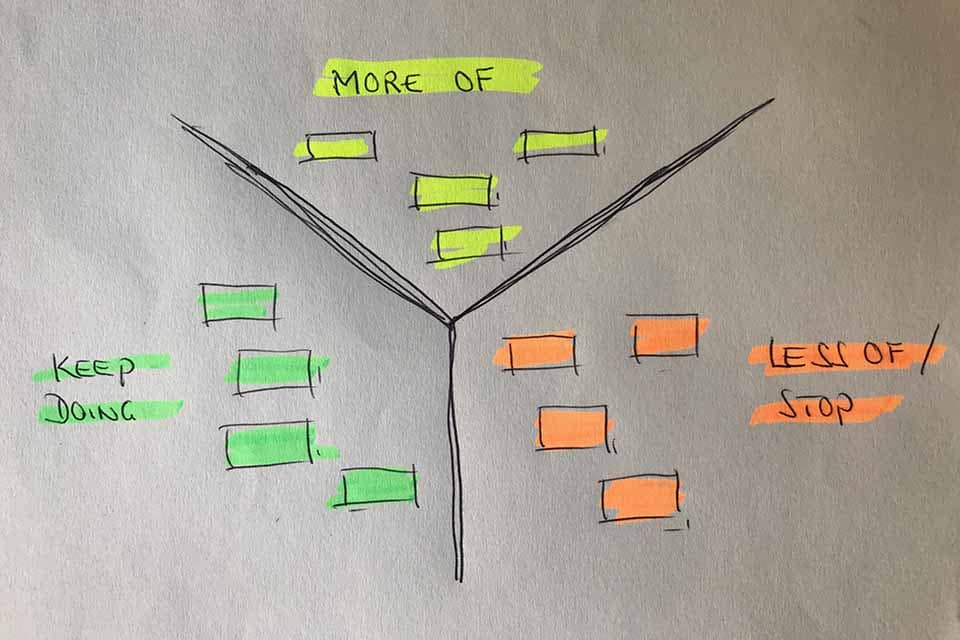What is the Small Starfish Retrospective?
Smartpedia: The Small Starfish Retrospective is a variation of the Starfish Retrospective in which team members group aspects of collaboration into three categories instead of five.
More of, Less of / Stop, Keep Doing
The continuous improvement of teamwork is an important aspect of Scrum. This improvement is initiated through retrospectives. A retrospective is a periodic team meeting for exchange between team members. The Small Starfish Retrospective is the little sister of the Starfish Retrospective, where aspects of collaboration are collected in three rather than five categories:
- More of: In this category, actions and insights are collected that are already lived, but that would offer further benefits if applied more intensively. Example: Test Driven Development.
- Less of / Stop: Here, aspects are grouped that should be done less or even stopped altogether in the future. Example: Unfreezing at the Daily Scrum.
- Keep Doing: This category covers aspects that work well and should also be used in the future. Example: Small Starfish retrospective.
The exchange at the Small Starfish Retrospective
As with all other variants of a retrospective, Small Starfish is not only about simply collecting and documenting elements of collaboration, but also about exchanging information. What works well, what could work better and what hinders concrete work? The aim is to gain insights together and, if necessary, identify problems. These problems need to be solved in the future in order to continuously improve cooperation. The retrospective itself can also be put to the test: Should a summary be formulated at the end of the retrospective? What feelings do the participants associate with the retrospective? How can time be used even more meaningfully?
Impulse to discuss
Is it more sensible to have a retrospective with 4 or 3 options? And should organisations vary the types used over time?
Notes:
If you like the article or would like to discuss it, please feel free to share it in your network. And if you have any comments, please do not hesitate to send us a message.
Here you can find additional information on Retrospectives.
Here you can find an article about the role of the keep manager in companies.
And here you can find additional information from our t2informatik Blog:



